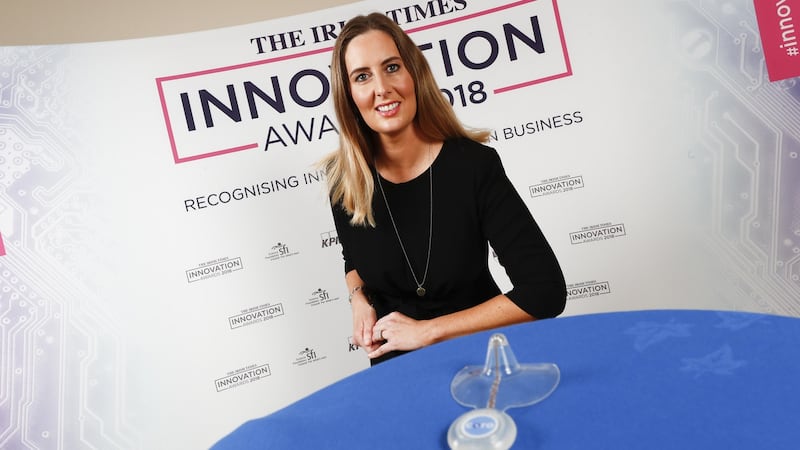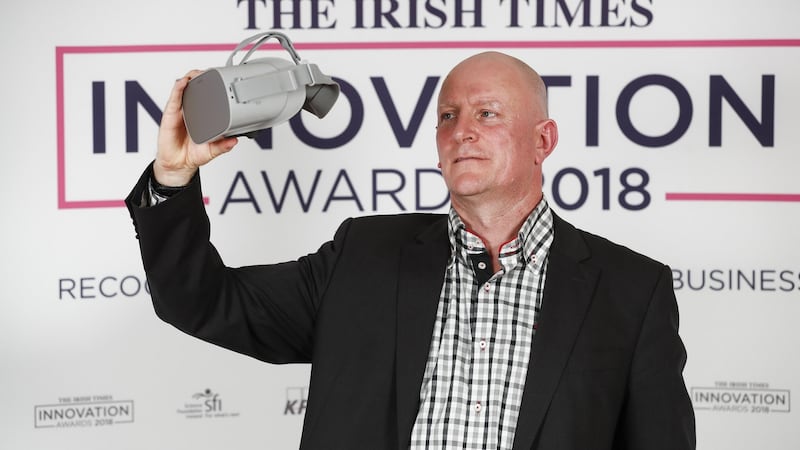BidX1
The traditional auction room can be a very intimidating environment. The nods, winks and other subtle twitches and signals which indicate bids confer a more than slightly forbidding mystique. Add to that the suspicion that there are “plants” with fake bids and other nefarious operators inside and outside the room and you’ve got a recipe for mistrust – for both buyers and sellers.
Irish company BidX1 has cut through all of these misgivings with the creation of a fully transparent online auction platform that allows users to buy or sell property online from anywhere in the world using any device.
"Our focus is on using technology to enhance the experience of buying and selling property," says marketing manager Nicole Pomeroy. "We have developed an innovative, transparent and trusted digital platform. In pioneering the use of online property auctions, we have transformed the property transaction process, completing sales across the full spectrum of asset types, from houses and apartments to offices, pubs and development sites, as well as large-scale investment portfolios.
More than 4,000 of these assets, totalling more than €600 million, have been sold using the online platform over the past three years.
The BidX1 online process is straightforward and user-friendly, according to Pomeroy. Properties are prepared for auction by specialist teams of commercial and residential surveyors who review the asset and set an optimum reserve price. Legal documents for each property are uploaded to an in-house portal by the vendor’s solicitors so potential buyers can perform the necessary due diligence prior to bidding.
‘Fastest finger’
Every bidder can see every other bidder who is identified by a unique number. They know who is in the virtual auction room and who is bidding and when. One attractive feature prevents “fastest finger” competitions developing. If a bid is placed within 60 seconds of the lot’s closing time, an additional 60 seconds will be added. During this extension period, any further bid that is placed will result in the clock re-setting again for a further 60 seconds, giving all registered bidders a fair and equal opportunity to place another bid.
“Our founder Stephen McCarthy was the first to run large property auctions in the RDS back in 2011,” says Pomeroy. “We already had property expertise and we combined that with software expertise to create this digital platform. We are not a technology company, we are a commercial and residential property company.”
According to Pomeroy the key advantages of the platform are efficiency, accountability and accessibility. “The typical residential sales process takes around 200 days. With us it takes an average of 9.5 weeks. It is fully transparent, and everyone knows what everyone else is doing. And it is accessible on any device regardless of location anywhere in the world.”
The future looks very bright for the firm which is now the second largest auction house in Britain and Ireland. "The UK business is going really well, and we have just entered into a joint venture with Pam Golding in South Africa", Pomeroy adds. "We are now targeting central and southern Europe as well."
Coroflo
Coroflo has developed the Coro, the world’s first accurate breastfeeding monitor. The revolutionary device uses wireless sensor technology to assist mothers who may be facing particular problems in breastfeeding their children.

"The WHO recommends that mothers continue to breastfeed for the first six months of their child's life," says Coroflo's co-founder and chief executive Roseanne Longmore. "In Europe, just 13 per cent of mothers breastfeed for six months, and Ireland has one of the lowest rates in the world."
One of the main causes is fear among mothers regarding the supply of milk, she explains. It is not that mothers don’t want to breastfeed in many cases; they are anxious about the amount of milk their child is getting. This leads them to start supplementing with formula milk and this eventually results in cessation of breastfeeding.
“This is a real problem in developed countries and we are the first to come up with a solution to it,” Longmore notes.
The Coro is based on a standard silicon breast shield commonly used by mothers to protect their nipples or assist babies to latch during feeding. The Coro incorporates a tiny sensor which measures the milk flow and transmits it via Bluetooth to an app on the mother’s phone.
Accurate information
The device has its genesis in the experience of Longmore's two co-founders, Dr Helen Barry and James Travers. Their son was born at full-term but was less than five pounds in weight. Weight gain was massively important, and it was crucial to have accurate information on how much milk he was being fed.
Travers has a background in electronics and his most recent experience in 3D printing had given him exposure to flow-metering technologies. Combining that with Barry’s knowledge as a medical doctor, and Longmore’s background in business and financial services, led to the establishment of Coroflo and the development of the now-patented Coro.
“We raised €900,000 in a seed round and launched the company in April of 2017,” says Longmore.
The device gives mothers and medical professionals very important and useful insights. “The app is very interesting,” says Longmore. “It gives mothers real time information and they can see the feed as it happens. They also have a record of every feed from each breast for comparison. There are all sorts of data analytics they can access.”
Latched on
Mothers can also use it to see when a child is actually feeding or is just latched onto the breast for comfort. “If a child is latched on for an hour they can see if they are feeding for the whole time or not,” says Longmore.
The Coro will also open up potential new lines of research, with mothers being able to upload data for use in large-scale breastfeeding studies by health services or other organisations.
The device will be launched commercially early in 2019. "We will be selling exclusively through the McCabe's and McAuley's pharmacy chains in Ireland for six months before moving on to the UK, Germany, France and Italy, " says Longmore.
Mersus Technologies
Athlone-based Mersus Technologies has developed an immersive virtual reality platform that mirrors real-world environments and scenarios so precisely it can be used to train workers in the latest advanced manufacturing processes. This has been achieved through the combination of traditional animation art with the very latest in computer-generated image technology. "We're the Walt Disney of industrial animation," says chief executive and founder Geoff Allen.

The company makes use of rendering or image-synthesis technology. This is an automated process that takes real or artistically created images and animates them. "The new technology enables real-time rendering," Allen explains. "It's gaming animation as opposed to the traditional frame by frame process. It's Tom Clancy Black Ops not Disney. It renders in front of you. In the past you sat at a keyboard and looked in at the computer. Now you have human-centred computing where you wear glasses or immersive headsets. We are taking gaming animation and giving it an industrial slant. We take existing computer-aided design assets and data and put additional value on them. We reuse them in a different format."
‘Magic sauce’
According to Allen, the key differentiator for the technology is how it combines art with science. “The magic sauce for us is that we have technical knowledge combined with the visual prowess of animation artists. What differentiates us as Irish people is that we are storytellers. We are providing quality content for both new computing platforms and the next generation of storytelling. Storytelling is a business that Ireland has excelled at and by combining this with our domain knowledge we have developed an immersive platform where you can train new staff using on even the most complex of equipment.”
The technology has been in development for the past five years and the company has met its 2018 target of winning three new customers including Swedish clean air solutions specialist Camfil and German industrial giant Siemens.
“Working with Camfil on the use of the technology for sales and marketing and training applications,” says Allen. “We can use high resolution images and video to create an immersive environment for technical support training. We are working with Siemens on a multi-user virtual space.”
3D video conferencing
This is a a kind of 3D video conferencing where participants in different locations meet in a virtual room and discuss and manipulate demonstration objects on a table in front of them.
“We are also looking at training in the pharma sector,” he adds. “We are looking at how we can train people to work in clean room environments. We’ll put you in any environment you want. The only limit is your imagination. The next generation of the technology will see the addition of haptic tools where people will have a sense of touch as well. We will be integrating with the technology with data analytics and AI and so on as well.”
Looking to the future he says the outlook is “beyond brilliant”. “We are hitting our targets with three customers this year and are looking forward to rapid growth in 2019. We have also attracted investment from the Far East.”











